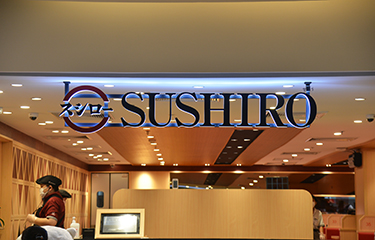Japan’s largest sushi chain raises prices for first time ever amid rising costs

Japan’s largest rotary sushi chain, Sushiro, will raise its prices in response to higher material costs and lower profits.
Sushiro is Japan’s largest sushi chain both in terms of sales and number of outlets. The chain has maintained a price of JPY 100 (USD 0.75, EUR 0.70), before tax, for a plate of two nigiri sushi since its establishment in 1984. However, rising raw material and transportation costs, along with the depreciation of the yen, have cut into its profits and the company said in order to maintain its current material quality, a price hike could not be avoided.
Kumamoto City-based Food & Life Companies, the parent company of Akindo Sushiro Co., Ltd., announced it will implement the price hike starting on 1 October – the start of the company’s fiscal year.
Sushiro has three price levels, which are divided by the color of the plate. With the 10 percent national consumption tax included, yellow dishes will go from the current JPY 110 to JPY 120 (USD 0.85 to USD 0.92, EUR 0.79 to EUR 0.86), red dishes from JPY 165 to JPY 180 (USD 1.27 to USD 1.39, EUR 1.18 to EUR 1.29), and black dishes from JPY 330 to JPY 360 (USD 2.54 to USD 2.77, EUR 2.36 to EUR 2.58).
The prices above are typically for the company’s suburban shops, which make up most of the chain’s current stores. In recent years, Sushiro has been placing more emphasis on developing urban shops in high foot-traffic areas. The urban shops will have the additional features such as an automated guidance system to help diners find their assigned table, a second high-speed conveyor line for delivering ordered dishes quickly, and a smartphone operated locker system for picking up takeout orders.
The urban shops, and some “semi-urban” shops, may have higher prices to reflect the higher rents in these locations, the company said. The pricing structure for the urban and semi-urban shops has not yet been announced. All of the chain’s 640 shops were simultaneously closed from 10 to 11 May for renovations, and to install the equipment mentioned according to category.
Food & Life Companies announced it is also trying to vertically integrate by establishing a joint fish-farming venture called Marine Bath with aquaculture company Takuhiro, which is also based in Kumamoto City. The new joint-venture is intended to improve the performance of farmed fish species by cooperating with gene-editing startups, and Food & Life Companies plans to expand overseas, especially in China, it said.
Food & Life Companies consolidated financial results for half year from October to March showed its net income was down 28 percent from the same period in the previous year. In the domestic Sushiro business, revenue was up by 2 percent, while operating income fell by a third. The Kyotaru sushi chain, acquired by Food & Life in 2021, lost JPY 900 million (USD 6.8 million, EUR6.4 million).
The company’s most recent monthly sales data, released on 2 June, indicates existing store sales in the first half of the calendar year were 95.7 percent that of the same period in 2021. But in April and May, this recovered to 105 and 107 percent, respectively.
Food & Life Companies said it expects its consolidated net income for the fiscal year ending September 2022 to decrease by 34 percent from the previous fiscal year. Revenue is forecast to increase by 23 percent year-on-year with the lifting of restrictions on operating hours, but this is a five percent decline from a previous forecast. Operating income is expected to decrease by 30 percent, partly due to increases in store rents and distribution costs.
Photo courtesy of Sarunyu L/Shutterstock






Share